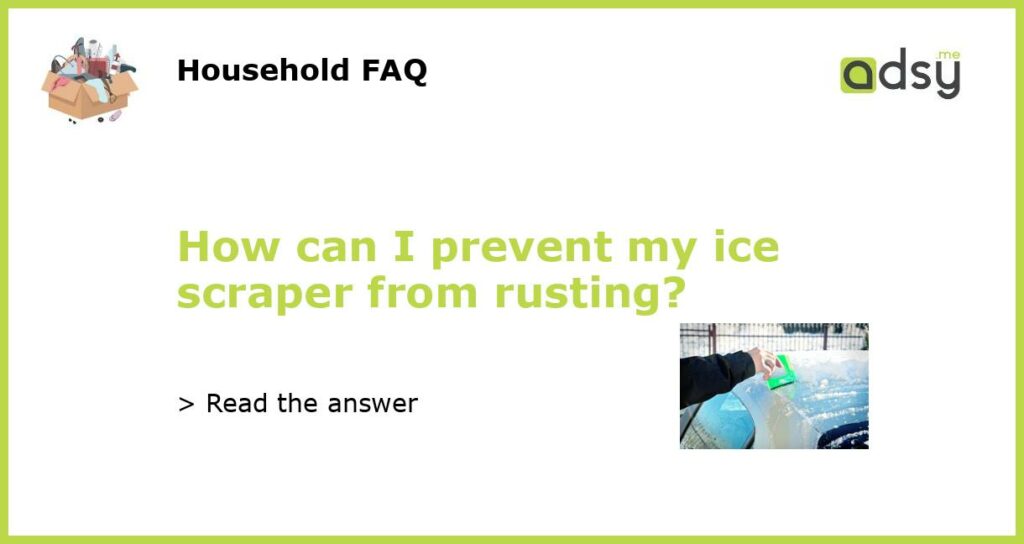Reasons for ice scraper rusting
Ice scrapers are important tools for people living in cold climates. But they are often exposed to moisture and salt, which can cause them to rust over time. Rust on the ice scraper can be unsightly and can reduce its effectiveness. Some of the reasons why ice scrapers rust include:
- Exposure to moisture: When ice scrapers are exposed to moisture, for example, when they are left in a wet car or used to scrape wet ice, they are likely to rust.
- Exposure to salt: Salt is commonly used to de-ice roads and walkways in cold climates. When ice scrapers come into contact with salt, they are likely to rust over time.
- Low-quality materials: Some ice scrapers are made from low-quality materials that are prone to rusting. This is why it’s important to invest in a high-quality ice scraper made from durable materials.
Preventing ice scraper rusting
Preventing your ice scraper from rusting is essential if you want it to last for a long time and maintain its effectiveness. Here are some tips to prevent ice scraper rusting:
- Store it properly: Always make sure to store your ice scraper in a dry place, away from moisture and salt. This will help prevent rust from forming on the scraper.
- Invest in a high-quality scraper: Choose an ice scraper made from high-quality materials that are resistant to rusting. Look for ones made from stainless steel or rust-resistant aluminum.
- Use it properly: Avoid using your ice scraper to scrape wet ice or ice with salt on it. Instead, use it to scrape dry ice. If you have to scrape wet ice, make sure to dry off the scraper afterwards before storing it.
- Clean it regularly: Clean your ice scraper regularly using a mild detergent and warm water. This will help remove any salt or moisture that may have accumulated on the scraper.
Best practices for using an ice scraper
Using an ice scraper properly can help prevent rusting and prolong the life of the scraper. Here are some best practices for using an ice scraper:
- Start from the top: Begin scraping the ice from the top of the car and work your way down. This will prevent ice from falling onto areas you’ve already cleared.
- Use short strokes: Use short, firm strokes to chip away at the ice. Don’t apply too much pressure or you risk damaging the scraper or your car’s paint job.
- Alternate sides: Alternate between using the right and left sides of the scraper to prevent uneven wear.
- Take your time: Don’t rush the job. Take your time and make sure to clear all the ice from the car’s windows and windshield.
When to replace your ice scraper
Even with proper care, ice scrapers will eventually wear out and need to be replaced. Here are some signs that it’s time to replace your ice scraper:
- Rust: If your ice scraper has significant rust damage, it’s time to replace it.
- Bent or broken blades: If the scraper blades are bent or broken, it’s time to replace it.
- Blunt edges: If the edges of the scraper blades have become blunt, it’s time to replace it as it will no longer be effective at removing ice.
Ice scrapers are essential tools for anyone living in cold climates, but they are prone to rusting over time. To prevent rusting, it’s important to invest in a high-quality scraper made from durable materials, store it properly, use it correctly, and clean it regularly. By following these tips, you can prolong the life of your ice scraper and keep it in good working condition for longer. But, even with proper care, ice scrapers will eventually wear out and need to be replaced – look for signs such as rust, bent blades or blunt edges and replace it when necessary.






